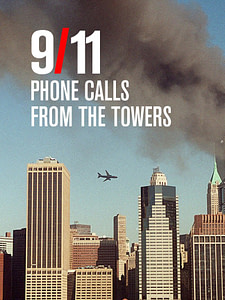
This week, on the anniversary of Sept. 11 terrorist attack, we take a Dear Smartphone “time out” to consider how emergency communications have transformed over the two decades since. The inspiration is three-fold: in last week’s column, a reader lamented the difficulty of getting emergency services in a remote, wooded area; during the week, Apple announced two new I-phone features, vehicle crash detection and satellite service, that will update today’s emergency services. Third, here on the anniversary of 9-11, we forget that most of us did not have cell phones back in 2001 and that changed everything in terms of our news and emergency response.
Perhaps the most poignant memory from that day is of downtown office workers fleeing the burning World Trade Center on foot, streaming over the Brooklyn Bridge. There are throngs of people rushing out, looking confused, lost, and shocked. Some of the women and men carry purses or briefcases but none of these rushing pedestrians have phones in their hand. When they got off the bridge and reached safer grounds, they would need to find a wired phone or send an email. Back in 2001 the most popular cell phone was the Nokia 3310. These phones were expensive and not an everyday household item.
But, people needed to connect. So, in 2001 lists were posted physically on buildings and also online with the names of people who were missing both short term, or long term. Again, the emergency system relied on using wired phones and email. Text messages, with luck one that read “I am safe”, were not yet a feature but AT&T introduced it in November of that year. Conceivably it was a feature that the company had planned to debut and the World Trade Center debacle brought urgency to that.
Airfone:
Some of the deceased were not without mobile phones. In-seat phones were used by passengers on the American and United flights who witnessed their hijacked aircraft. On United Flight 93, thirteen passengers and crew members placed a total of 37 calls, 35 of them from Airfones located on the back seats. Their haunting final conversations are recorded and can be played back.
But, the most haunting memory of that day is not the voice recordings but the pictures. There is one of the second airplane about to hit the Twin Tower, the two buildings obscured in smoke flames, and doomed workers jumping from upper story windows. Later on, there would be countless images of a waving American flag, fearless first responders, and NYFD cleaning up the rubble. It’s hard to imagine today, but none of these pictures were taken by casual bystanders pulling out their iPhone or Android devices. It took until 2008 and beyond for better picture-taking capability to be fully integrated into phones. In 2001 the state-of-the-art was a Samsung phone that could take 20 photos with a 0.35 megapixel resolution. Fortunately, there were other sources on 9-11. Downtown Manhattan did not lack for tourists with conventional SLR cameras, there were newscasters and photojournalists in the vicinity, and security officers on the beat.
These pictures were then shared over newscasts and in newspapers. Broadcast news began filming minutes after the first plane crash and they suspended all other coverage that day. But notably, stories and pictures did not rebroadcast on social media since the likes of Facebook and Twitter did not emerge until nearly twelve years later. Today, pictures from bystanders would be posted in seconds, unfolding news would be sent out in small tweets or lines of text, and there would be a corresponding flare of person-to-person commentary, rumor, emotional outpouring, communal shock, and perhaps panic.
Disconnect?
Most likely, today’s young adults have a disconnect. They may learn about 9-11 in school or from their family but have a hard time imagining how different communications were at that time.” B.C.” (before cell phones) people who made it to safety had to wait to find a way to connect and let their loved ones know they where ok. People trapped in the rubble may have died without this capability. So today, 9/11/2022 – emergency communications are vastly improving, as witnessed this week with brand new notification features on the iPhone. Is the world getting safer? It’s hard to know.
____
In closing, a touch of irony about shared history and memories, “A.C.” (after cell phones). A firefighter who lost his brother on Sept. 11 visited the 9-11 Memorial in New York City, which opened in 2011. At this somber site there are reflecting pools and alongside, etched in stone, the individual names of the people who lost their lives. The firefighter, in his own post, found phone media to be intrusive and callous. He bemoaned the visitors armed with selfie-sticks that visit the Monument, pose, say cheese, smile, click and share.


Leave a Reply
You must be logged in to post a comment.